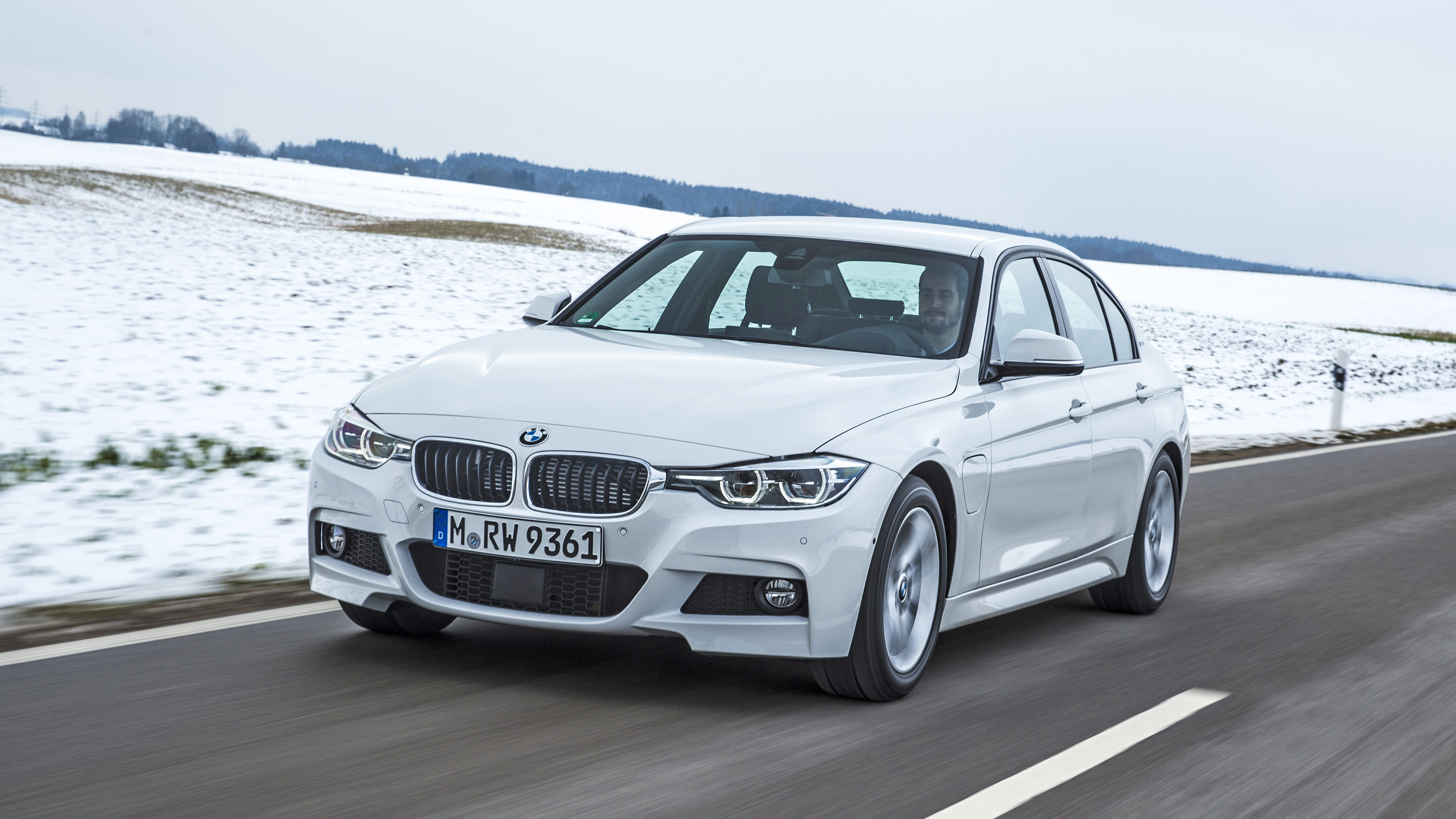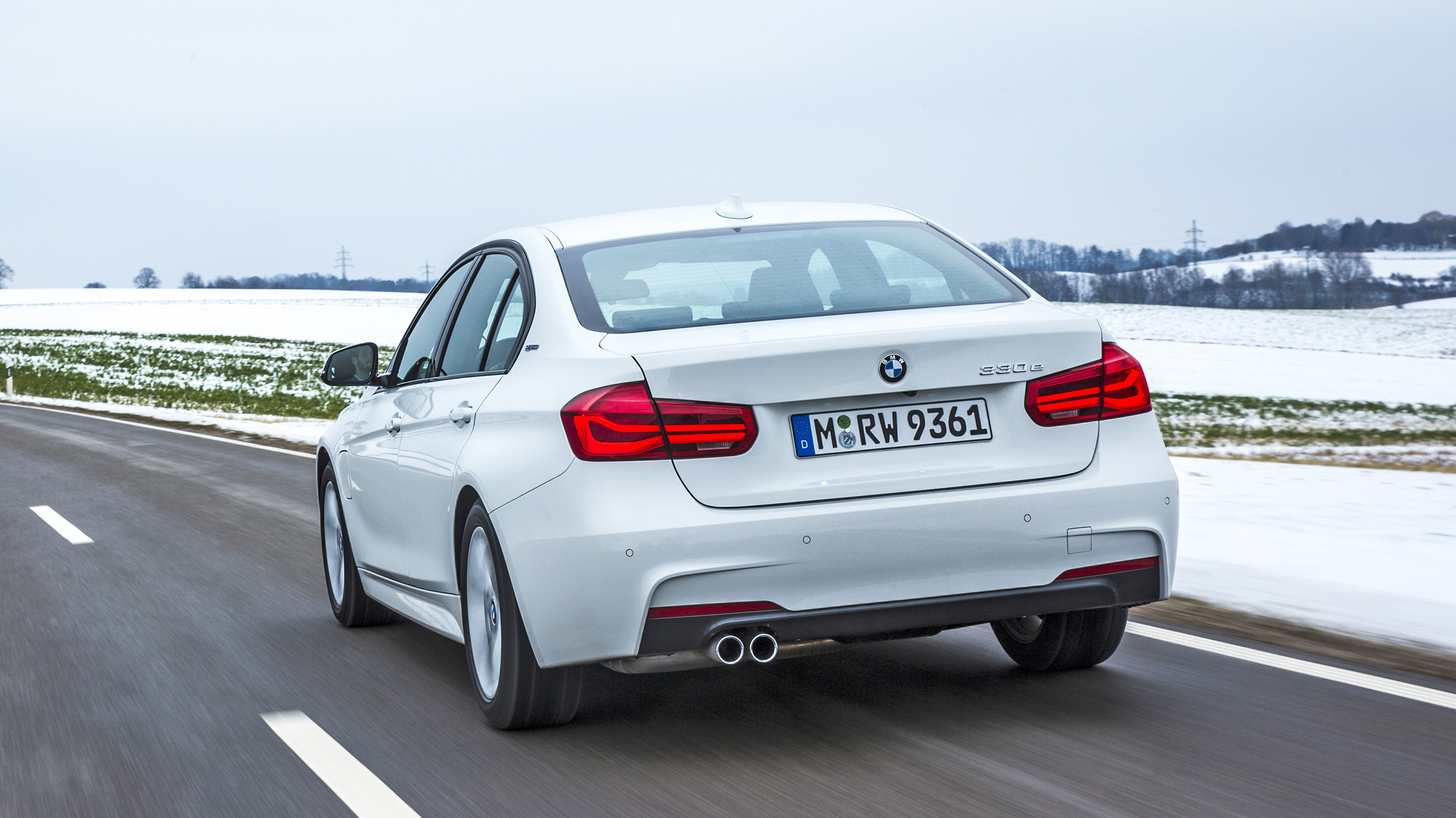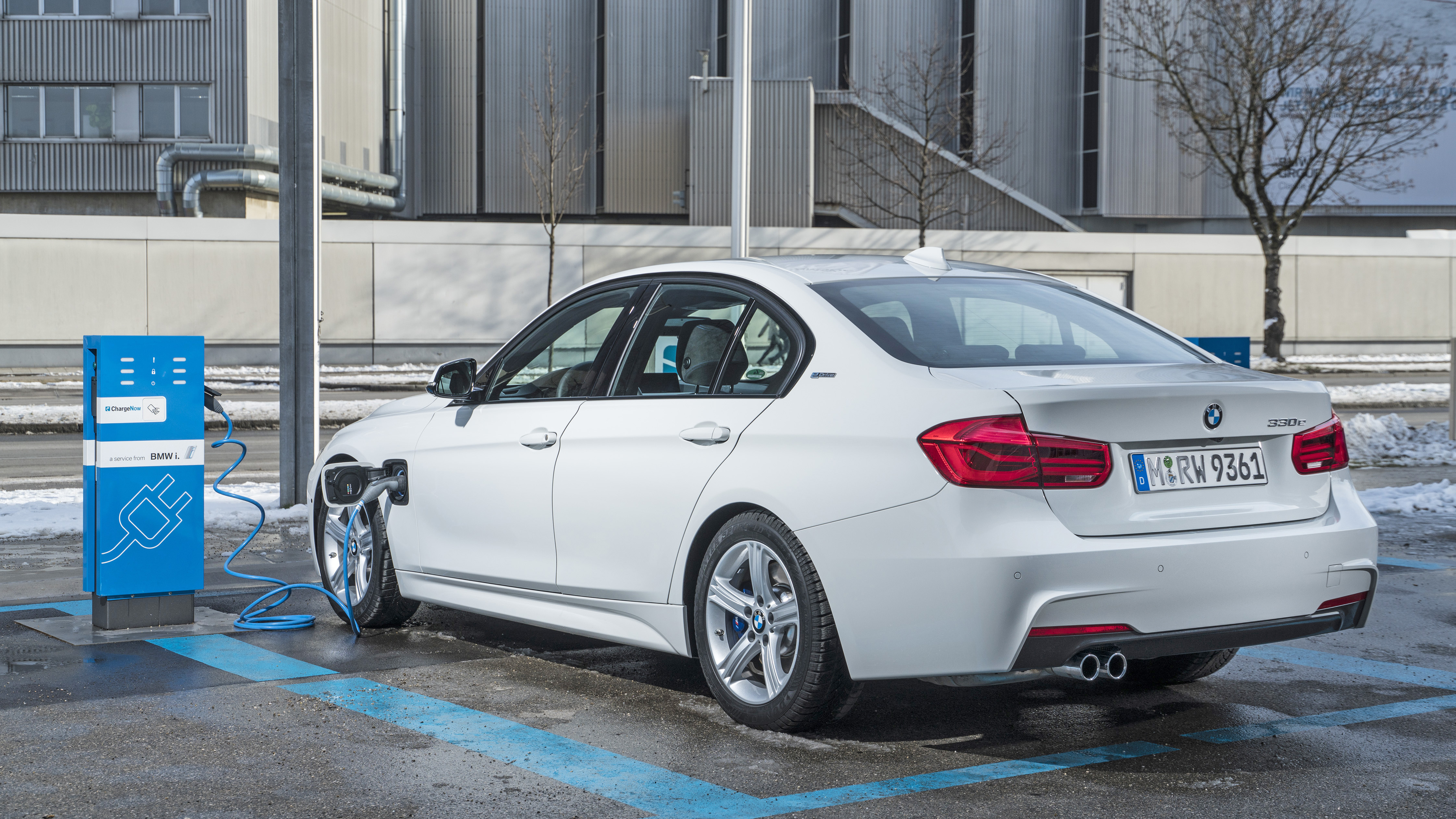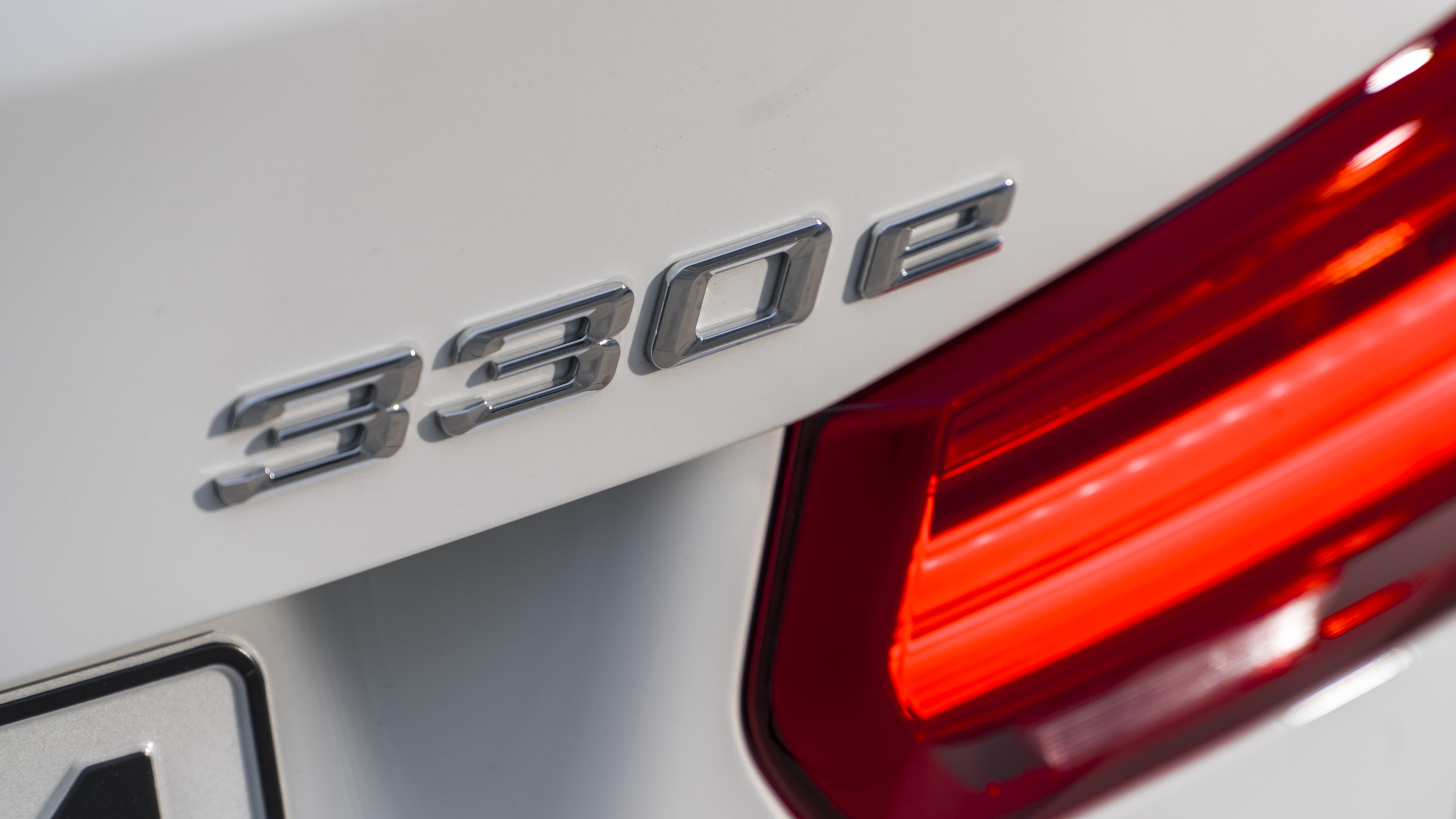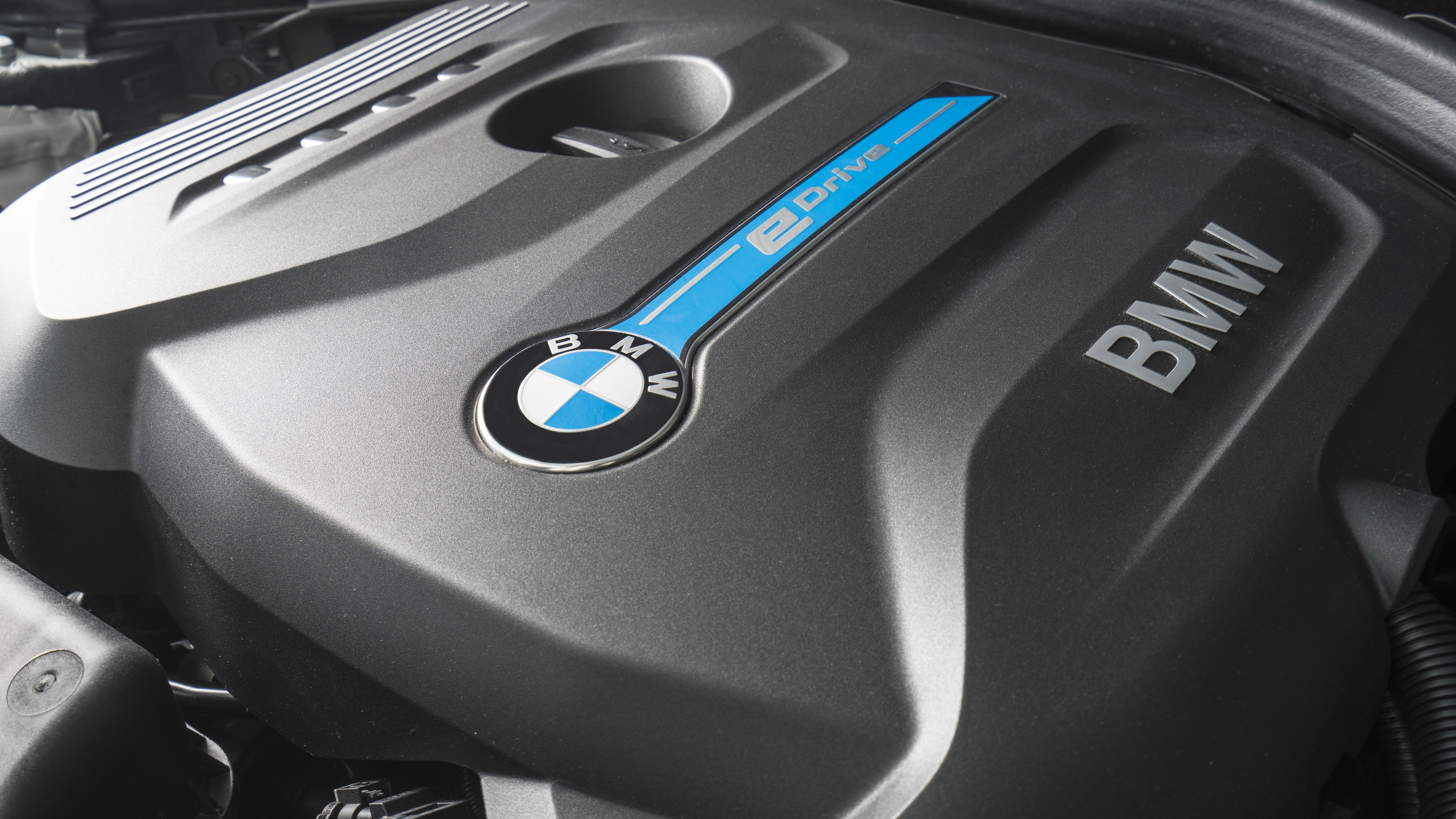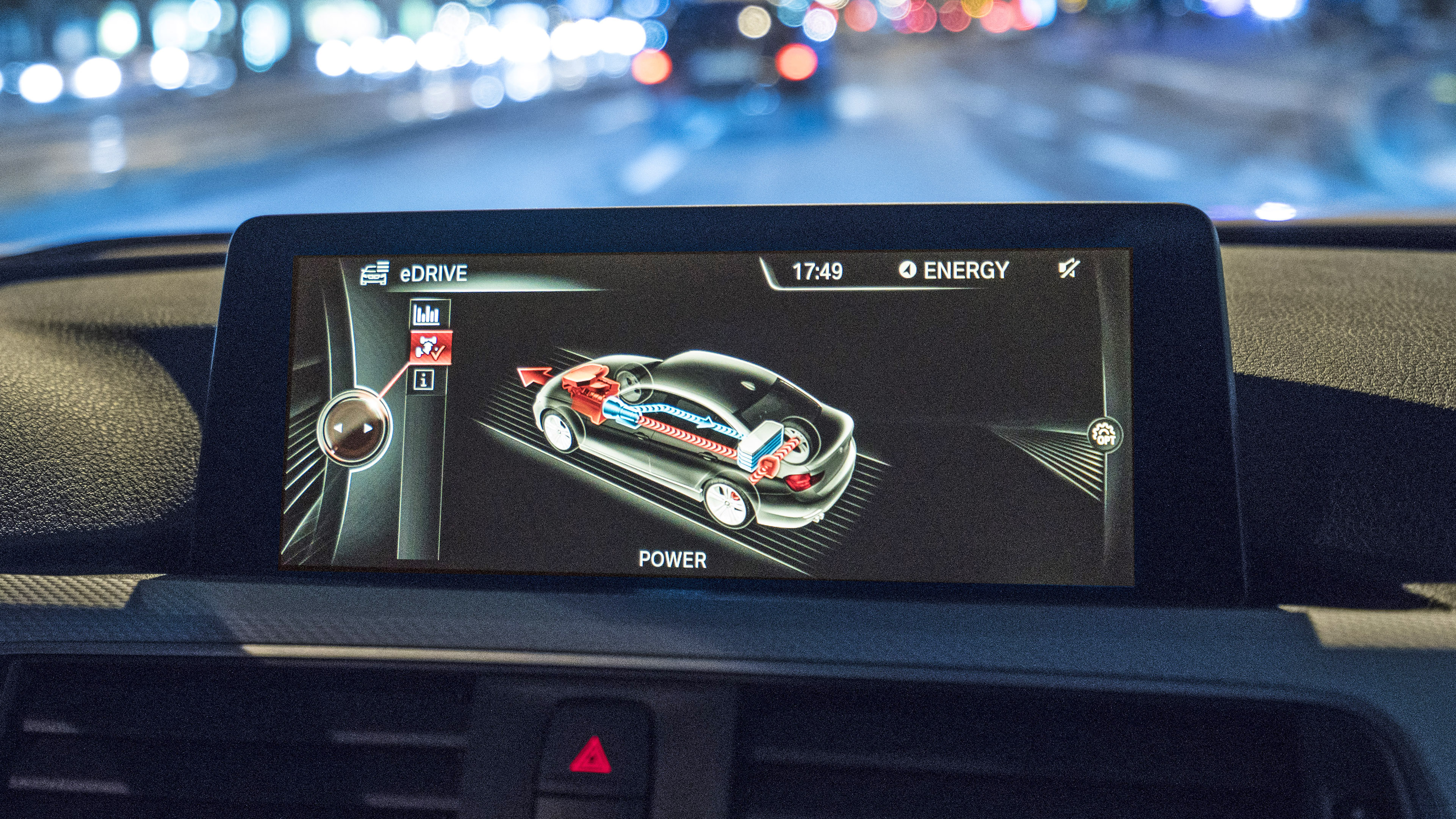
Why are you reviewing a normal-looking BMW 3-series?
Because it's got a plug-in hybrid drivetrain, that's why. But it’s not like the 225xe people carrier, which is a natively front-driven car. That car's hybrid system adds an electric motor at the back for the bonus of 4WD.
This 330e, on the other hand, is natively rear-drive. It uses a motor hooked directly to the flywheel driving through the regular automatic gearbox, so it's still rear-drive only. So closer to BMW’s tradition.
OK, got it. Any numbers for me?
It uses a four-cylinder, 2.0-litre petrol engine with 184bhp. Add the e-motor to the equation, and you have 252bhp in all. Because the electric motor is geared one-to-one with the engine, its contribution is there for you all the time (the 225xe's rear motor has a single-speed transmission and its effort falls away to nothing at motorway speed). So the 330e has the poke of a 330i petrol, and gets to 62mph in 6.1sec. Hot hatch quick.
Does it feel as lively as the numbers suggest?
Pretty much. There's a smooth urge at mid revs thanks to the ever-alert electric torque. The petrol engine is quiet, but its tone is boring and grumbly. But nothing like as loud as the diesel engine you'd be buying instead.
In town, you're often propelled by uncannily smooth and silent e-drive. Provided the battery has charge, the electric motor, at 88bhp, is plenty powerful enough for urban use without troubling the engine at all.
And the economy?
Officially, 149mpg and 44g/km.
Top Gear
Newsletter
Thank you for subscribing to our newsletter. Look out for your regular round-up of news, reviews and offers in your inbox.
Get all the latest news, reviews and exclusives, direct to your inbox.
And is it as economical as it's meant to be?
Yes, if you plug it in often, and use very little fuel. Perhaps even doing better than that 149mpg official figure.
But as your journey length increases, you use more. A 50-mile test trip got me 63mpg, but little of that was on motorway. And at the end the battery was flat.
Mind you, it's meant to be flat. The navigation system looks at your destination and makes sure electric power is used as much as possible.
It even uses electric power uphill to drain the battery, so that it can accept maximum regeneration of the way back down. You can press a button to hold the battery's charge if you know you're going into a town – but if you've programmed the nav it will, to an extent, do that anyway.
Is it a good excuse to avoid buying a diesel?
It's £33,935, less £2,500 Government grant. That makes it cheaper than a 330d. On long journeys a diesel will be more economical. But in commuting, if you charge it up daily, nothing will beat the economy of a plug-in car. At night-time rates, that 20 miles-worth of electricity costs about 60p.
Oh, it's also a handy few grand cheaper than its only direct rival, the Mercedes C350 e.
Is it a real 3-series?
Yes. The handling remains terrific, the ride is fine. The only debit is an unprogressive brake pedal as the effort is shuffled between regeneration and friction. The cabin isn't as gorgeously appointed as a new A4 or C-class, mind, but the same applies to any 3-series these days. You still get a flat-floored boot with folding rear seats. But there's no Touring version because this car will sell mostly in the US and China, and they don't like estates there.
Featured

Trending this week
- Car Review
BMW 1 Series
- Top Gear's Top 9
Nine dreadful bits of 'homeware' made by carmakers




